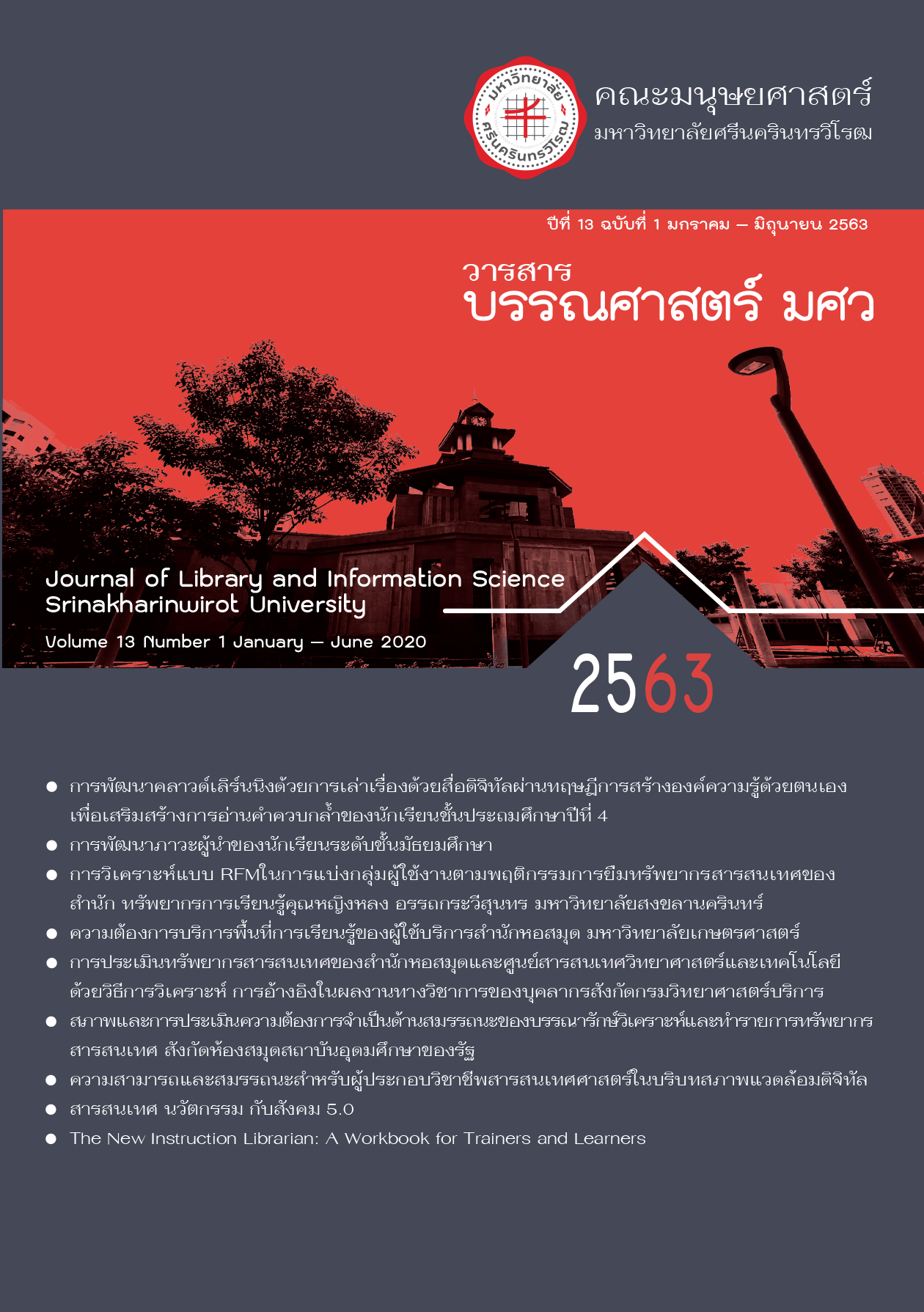The Leadership Development of Secondary School Students
DOI:
https://doi.org/10.14456/jlis.2020.2Keywords:
Leadership of secondary school student, Social interactionAbstract
The objectives of this study were 1) to investigate the leadership factors of secondary school students, 2) to develop an activity package for developing the leadership of secondary school students, and 3) to study the effectiveness of the developed activity package. The study was divided into 3 stages as follows; the first stage was to investigate the factors of secondary school student leadership. The samples were 988 students in the schools under the Office of Educational Service Area 2, in the academic year 2018, selected by a multi-stage random sampling method. Data were collected by using questionnaires and analyzed by frequency, percentage, exploratory factor analysis and confirmatory factor analysis statistics. The second stage was to develop a leadership activity package on social interaction that had the highest Eigen value at 18.257. The activity package was evaluated the appropriateness and congruence by a panel of experts, using a Chi-Square Test. The third stage was to study the effectiveness of the developed activity package by implementing to 30 senior secondary school students at Triamudomsuksapattanakarn School. The student leadership was evaluated before and after the implementation of the developed activity package. Data were analyzed by using mean, standard deviation, and a t–test for dependent sample statistics. The students' satisfaction with the activities was evaluated and analyzed by using mean, standard deviation, and a t–test for one sample statistic (µ= 3.50). The results indicated as follows. 1) The leadership factors of secondary school students consisted of eight factors as follows: Social interaction, Citizenship, Responsibility, Working with others, Management, Critical thinking, Self-control, and Self-awareness. 2) The developed activity package consisted of significance, principle, objectives, contents, methods, and measurement and evaluation, in which there were 10 activities as follows: 1. building friendships, 2. living with others happily, 3. adaptation, 4. reasoning in decision making, 5. intelligence, 6. conflict management, 7. using technology to solve problems, 8. courage to confront problems, 9. acceptance of social changes, and 10. acceptance of the results of own actions. The developed activity package was verified that it was appropriate and congruence at a significant level of .01. 3) The students had higher level of leadership after using the developed activity package than before using the developed package at the significant level of .01. The students were satisfied with the activities at the highest level and higher than the set criteria at the significant level of .01.
Downloads
Published
Issue
Section
License
Copyright Notice
Copyright of articles in the journal of Journal of Library and Information Science Srinakharinwirot University is the author's and the Faculty of Humanities, Srinakharinwirot University. All articles submitted for publication will be assessed by a group of distinguished reviewers. The Faculty of Humanities, Srinakharinwirot University and the editorial board claim no responsibility for the contents or views expressed by the authors of Individual articles. Copying is allowed freely, provided acknowledgement is made thereof, and within the scope of copyright law.



